Pickleball, a game that’s taken the sports world by storm, offers a unique blend of strategy, skill, and fun. Whether you’re diving into a singles match or teaming up for doubles, the approach you take can make or break your game. But what exactly sets singles and doubles strategies apart in this paddle sport sensation?
In singles, it’s all about speed and stamina. Players find themselves covering the entire court, relying heavily on precision and power. Doubles, on the other hand, introduces a layer of complexity with teamwork and communication taking center stage. Each player has a specific role, and mastering the art of coordination can lead to dominating the court.
The Basics of Pickleball
Before diving deep into the intricacies of pickleball strategies, whether for singles or doubles, it’s vital to grasp the fundamental rules and gameplay characteristics that make pickleball distinct. Originating as a backyard pastime, pickleball has blossomed into a sport loved by millions across ages and skill levels. At its core, pickleball blends elements from badminton, tennis, and table tennis, creating a unique racket sport that’s both accessible and challenging.
Pickleball is played on a court that’s similar in dimensions to a badminton court, measuring 20 feet in width and 44 feet in length. The net, however, is set at a height akin to tennis, standing at 36 inches on the sides and dipping slightly to 34 inches in the center. Players wield paddles made of wood or composite materials to volley a lightweight, perforated plastic ball back and forth across the net.
The serve in pickleball is a critical component that sets the tone for each rally. Players must serve underhand, ensuring the paddle’s contact with the ball is below waist level. Unlike tennis, only one serve attempt is allowed, adding pressure to execute the serve accurately. The serving player or team must also land the ball in the diagonal service box across the net, adhering to the double bounce rule. This rule mandates that the ball must bounce once on each side before volleys can be exchanged from the air, encouraging rallies and strategic play from the outset.
Scoring in Pickleball is straightforward yet unique. Games are typically played to 11 points, with players needing to lead by at least 2 points to win. Matches can be singles or doubles, with slight adjustments in strategy and positioning depending on the format. In both scenarios, only the serving side can score points, making every serve an opportunity to gain the upper hand.
The “kitchen” or the non-volley zone is another landmark feature of pickleball that requires players’ attention. This area extends 7 feet from the net on both sides and is a zone where players cannot volley the ball. Stepping into the kitchen to volley is a fault, which encourages players to develop a nuanced short game, including dinks and soft shots that land in this area.
The Difference Between Singles and Doubles
When delving into pickleball strategies, it’s crucial to understand the fundamental differences between singles and doubles play. At first glance, the game might appear similar—after all, the court and the equipment remain unchanged. However, the dynamics and tactics of the game undergo a remarkable transformation when you switch from one format to the other.
In singles pickleball, the game becomes a test of stamina, speed, and precision. Players find themselves responsible for covering the entire court, which demands excellent conditioning and quick reflexes. The strategy often revolves around deep serves and returns to push the opponent back, creating opportunities for aggressive shots. Singles play emphasizes individual skill and the ability to outmaneuver one’s opponent with well-placed shots.
Contrastingly, doubles pickleball introduces a complex layer of teamwork and spatial strategy. The court, though the same size, suddenly appears smaller due to the presence of a partner. This format brings the concept of the “kitchen” or the non-volley zone into sharper focus. Teams frequently employ the strategy of both players advancing to the net, creating a wall that can volley aggressively and cut off angles. Communication and synchronized movement become as valuable as physical skill. In doubles, the emphasis shifts towards strategic placement of the ball and exploiting the gaps in the opponents’ defense.
| Aspect | Singles Strategy | Doubles Strategy |
|---|---|---|
| Coverage | Full court by one player | Court divided between partners |
| Focus | Stamina and precision | Teamwork and spatial strategy |
| Key Skills | Speed, quick reflexes | Communication, synchronized movement |
| Serve and Return | Deep serves to push opponent back | Varied serves to set up team play |
| Net Play | Less common, more space to cover | Crucial, with both players often at the net |
| Strategy Emphasis | Outmaneuvering the opponent | Strategic placement and exploiting opponents’ weaknesses |
Singles Strategy: Speed and Stamina
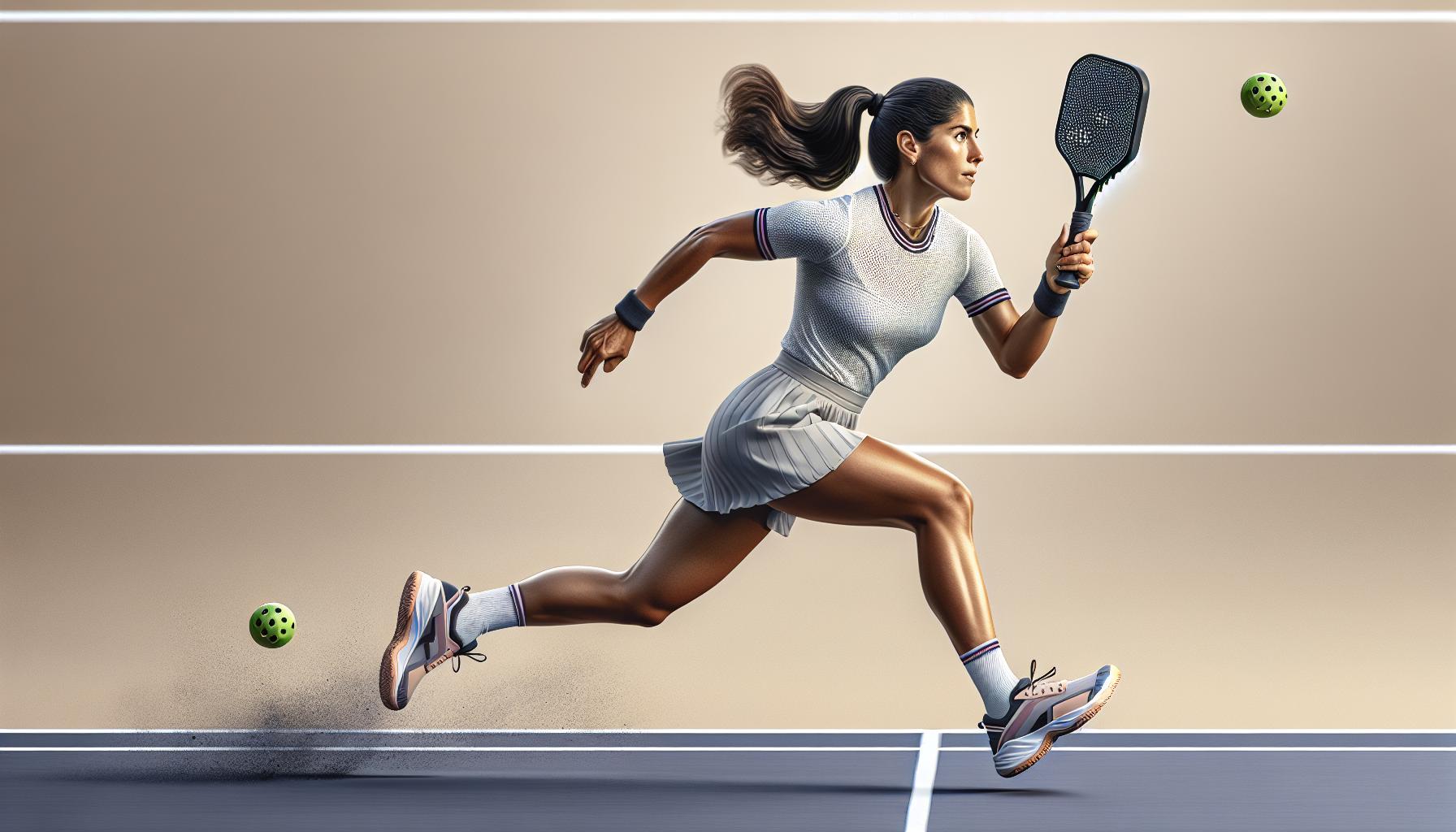
In singles play, the game of pickleball transforms into a high-energy battle where speed and stamina are paramount. Unlike doubles, a single player covers the entire court, making quick reflexes and endurance key components of a successful strategy. The ability to sprint from one end of the court to the other while maintaining precision in shots can often be the deciding factor in singles matches.
The strategic approach to singles play varies significantly from doubles. Players need to develop a keen understanding of when to push their opponents to the back of the court with deep shots and when to drop shots just over the net to draw them forward. This constant push and pull create opportunities to exploit weaknesses in the opponent’s game.
One crucial aspect of singles strategy is mastering the serve and return. A powerful and accurate serve can set the tone for the point, forcing the opponent into a defensive position right from the start. Similarly, a well-executed return can neutralize the server’s advantage, shifting the momentum. Players often try to serve to their opponent’s weaker side—usually the backhand—or to the farthest point to stretch the court and make it difficult for them to return a powerful shot.
Another key element in singles is the strategic use of the “kitchen” or non-volley zone. While in doubles play, the area just beyond the kitchen becomes a battlefield where volleys and drop shots are exchanged, in singles, players often use soft shots into the kitchen to draw their opponents closer to the net. This movement creates opportunities for passing shots that exploit the open court space.
Physical conditioning cannot be overstated in singles pickleball. Players must train extensively off the court to improve their speed, agility, and stamina. This preparation ensures they can endure long rallies and matches, which are common in tournament play.
In terms of shot selection, singles players benefit from incorporating a mix of slices, drives, and lobs into their repertoire. A well-timed lob over an opponent who has moved too close to the net can be particularly effective. Likewise, slice shots that stay low and skid can challenge an opponent’s ability to return a shot with power.
Doubles Strategy: Teamwork and Communication
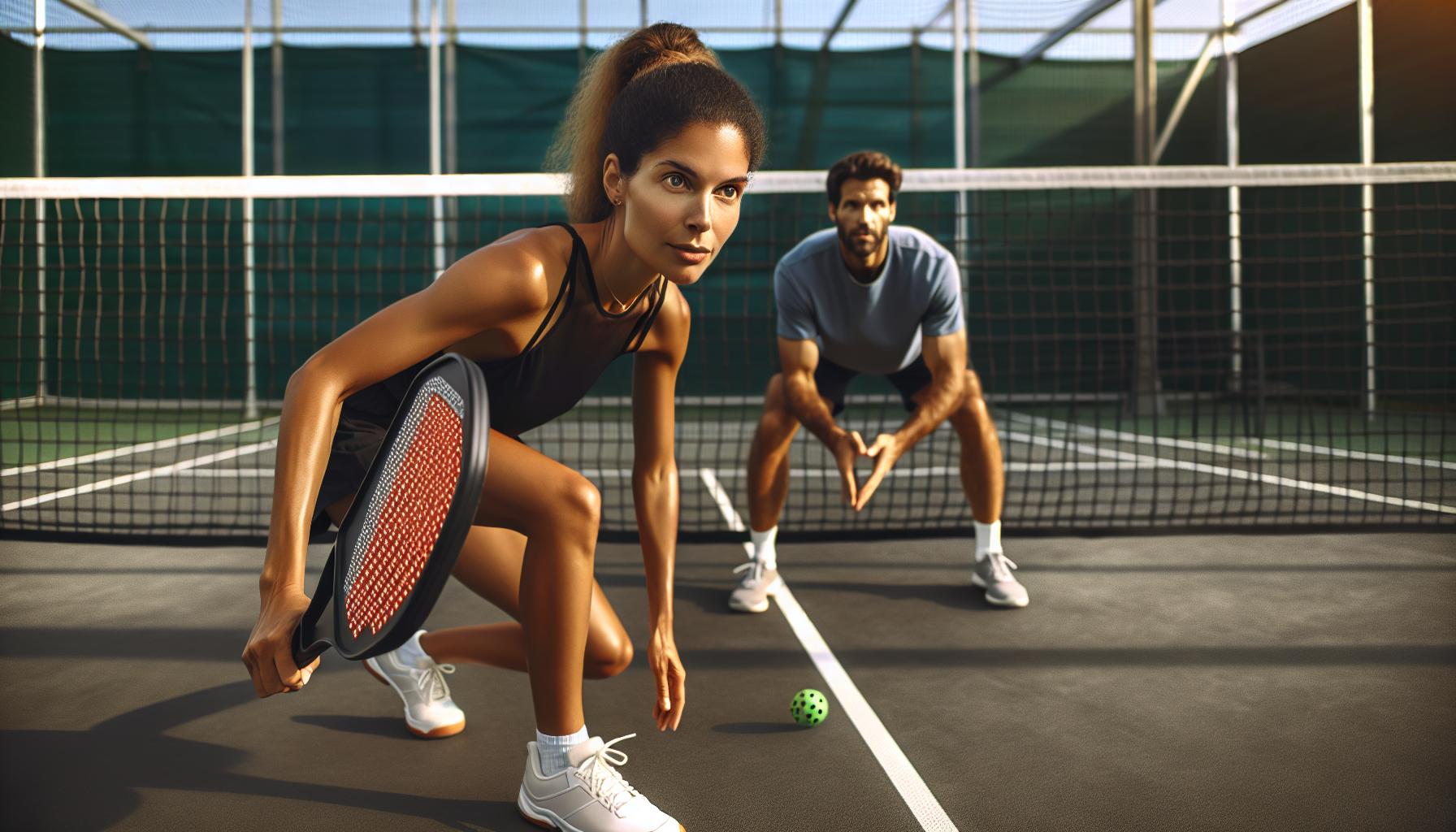
Doubles play in pickleball hinges on two paramount factors: teamwork and communication. Players should function as a single unit, moving in harmony and covering for each other flawlessly. The essence of a successful doubles team lies in their ability to anticipate their partner’s moves and adapt to the flow of the game without missing a beat.
The Power of Stacked Coordination
In doubles, players divide the court more strategically to optimize coverage and force opponents into challenging positions. One common technique is “stacking,” where both players position themselves on the same side of the court after serving. This allows the serving team to maintain a strong offensive stance and puts pressure on the receiving team to counteract with precision.
Communication is Key
The significance of verbal and non-verbal cues cannot be overstated. Partners often use quick calls or signals to indicate who will take the next shot, especially when the ball heads into ambiguous territory. Such clarity prevents collisions and confusion, ensuring a smooth, coordinated effort. Effective communication also involves planning plays during breaks, adjusting strategies on the fly, and offering encouragement to maintain morale.
Forging a Seamless Defense
Defensively, teamwork manifests through a shared responsibility for the court. When one player moves up to the net, their partner should hang back slightly, ready to intercept lobs or pass shots. This staggered positioning creates a defensive net that’s tough to penetrate. Additionally, both players should focus on controlling the center of the court, making it harder for their opponents to find open spaces for scoring.
Harnessing Synergy in Offense
Offensively, doubles strategy emphasizes the creation of opportunities. Teams work together to set up one player for the ideal shot, using a mix of soft dinks and powerful drives to keep opponents guessing. A key strategy is the “third shot drop,” aiming to hit a soft shot into the kitchen to move into net position aggressively. Successful execution relies heavily on both players being in sync, knowing when to charge the net and when to hang back for a potent return.
The Role of Power and Precision in Singles

In singles pickleball, the dynamics of the game shift significantly compared to doubles. Here, players have the entire court to themselves, which means they must cover more ground. This context necessitates a blend of power and precision that’s distinct from the teamwork-centric doubles play.
Power in singles is not just about brute force; it’s strategically unleashing force at the right moments. A powerful serve or drive can force the opponent to the back of the court, opening up the front court for softer, precisely placed shots. However, power without control can be a player’s downfall as unforced errors become more likely with each overly forceful hit. Therefore, while power plays a crucial role, it’s the precision in placing the shots that often determines the point’s outcome.
Precision in singles becomes particularly crucial during rallies. Accuracy in shot placement can keep the opponent on the move, wearing them down over time. This is where the game becomes a mental chess match, with players attempting to outmaneuver each other, finding that perfect balance between hitting with enough power to maintain offensive pressure and placing the ball where the opponent isn’t. A perfectly executed soft shot, like a drop shot that barely clears the net, can be just as effective as a powerful drive, if not more.
The essence of power and precision is most evident in the serving and return game. A strong serve can set the tone for the rally, but it’s the precision in the serve’s placement that can really put the server at an advantage. Similarly, a returner who can place their returns with pinpoint accuracy can neutralize a powerful serve, turning a defensive position into an offensive opportunity.
| Aspect | Importance in Singles Play |
|---|---|
| Power | High, for offensive pressure and forcing opponents back |
| Precision | Critical, for placing shots strategically and winning points |
Players often have to make split-second decisions on when to prioritize power over precision and vice versa. A powerful shot may win a point outright, but a precisely placed shot can set up a strategic advantage that leads to winning the rally. It’s this interplay between power and precision that defines the singles game.
The Importance of Coordination in Doubles
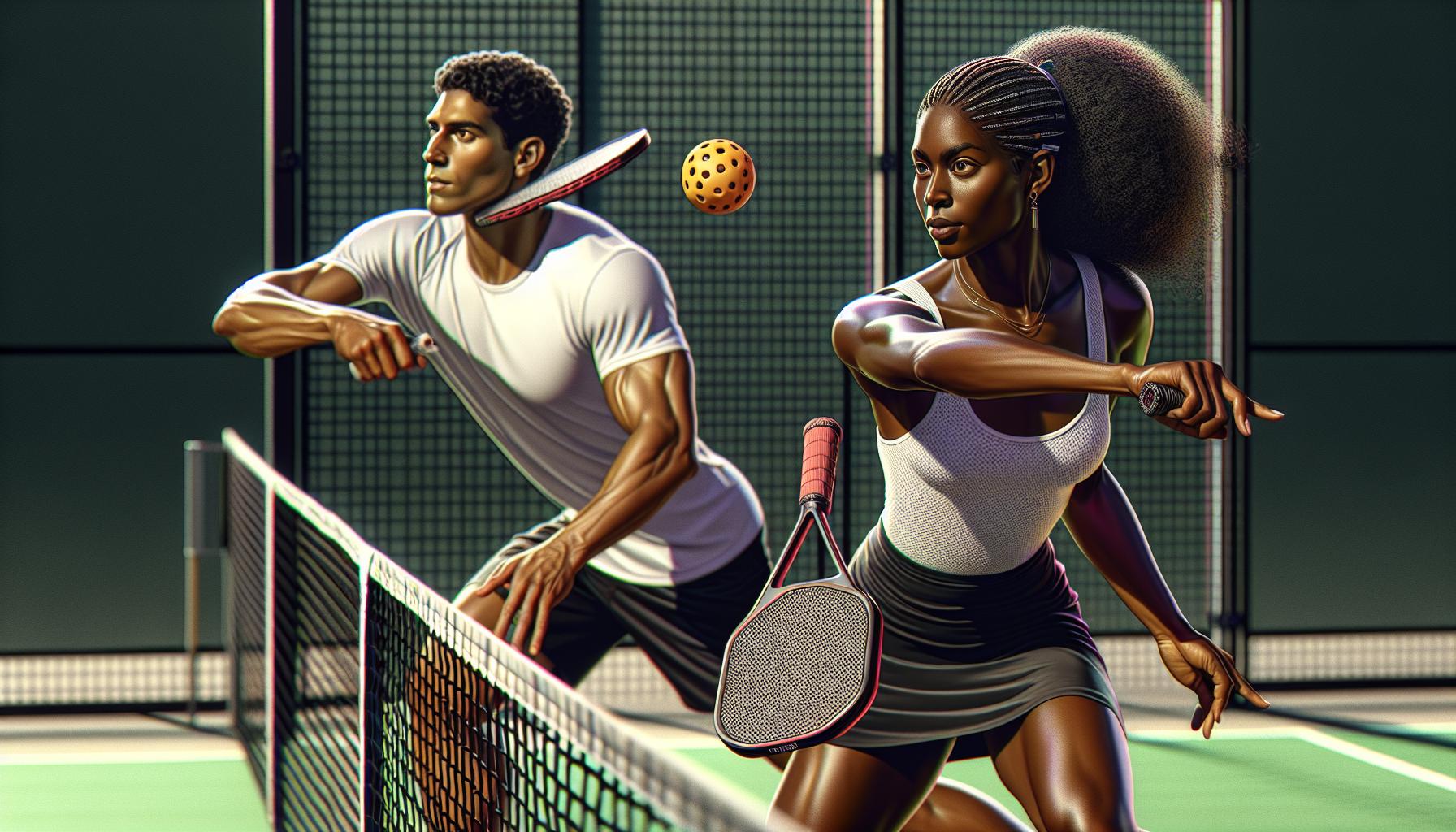
In the fast-paced world of pickleball, doubles play introduces a layer of complexity through the necessity of team coordination. This coordination is not just about moving in sync but also involves strategic communication and an intuitive understanding of each other’s play styles. In doubles, two players share the responsibility of covering the court, which demands a seamless partnership where both players are acutely aware of their positions, movements, and the evolving dynamics of the game.
Effective communication is the cornerstone of successful doubles teams. They often use verbal cues to inform each other about intentions, shot selections, and changes in strategy. This ongoing dialogue helps prevent collisions, ensures coverage of the court, and aids in setting up shots that exploit the opponents’ weaknesses. The best doubles teams have an almost telepathic understanding, predicting each other’s moves and complementing each other’s play style.
Another critical aspect of coordination in doubles is the strategic division of the court. Normally, teams adopt a side-by-side or front-and-back formation based on the situation and their preferred strategy. The side-by-side setup is excellent for defending against smashes and covering lateral shots, while the front-and-back formation allows one player to take charge of volleys and soft shots near the net, with the other handling deeper shots. Choosing when to switch between these formations can make or break a game.
| Formation | Advantages | When to Use |
|---|---|---|
| Side-by-Side | Covers lateral movements effectively | Defending against powerful shots |
| Front-and-Back | Allows specialization of roles | Attacking and applying pressure |
Coordination also extends to shot selection and rally construction. Doubles teams must constantly decide who takes the shot, especially in fast-paced exchanges. A good rule of thumb is that the player whose body is naturally aligned with the trajectory of the incoming ball should take the shot. This reduces the time needed to get in position and increases the chances of a successful return.
The complexity of these decisions and movements underscores the importance of practice and experience. Teams spend countless hours developing a synergy that allows them to move and act as one unit on the court. This coordination doesn’t just happen; it’s cultivated through dedicated effort, strategic planning, and continuous adaptation to each other’s playing style.
Mastering the Court: Tips and Techniques for Singles
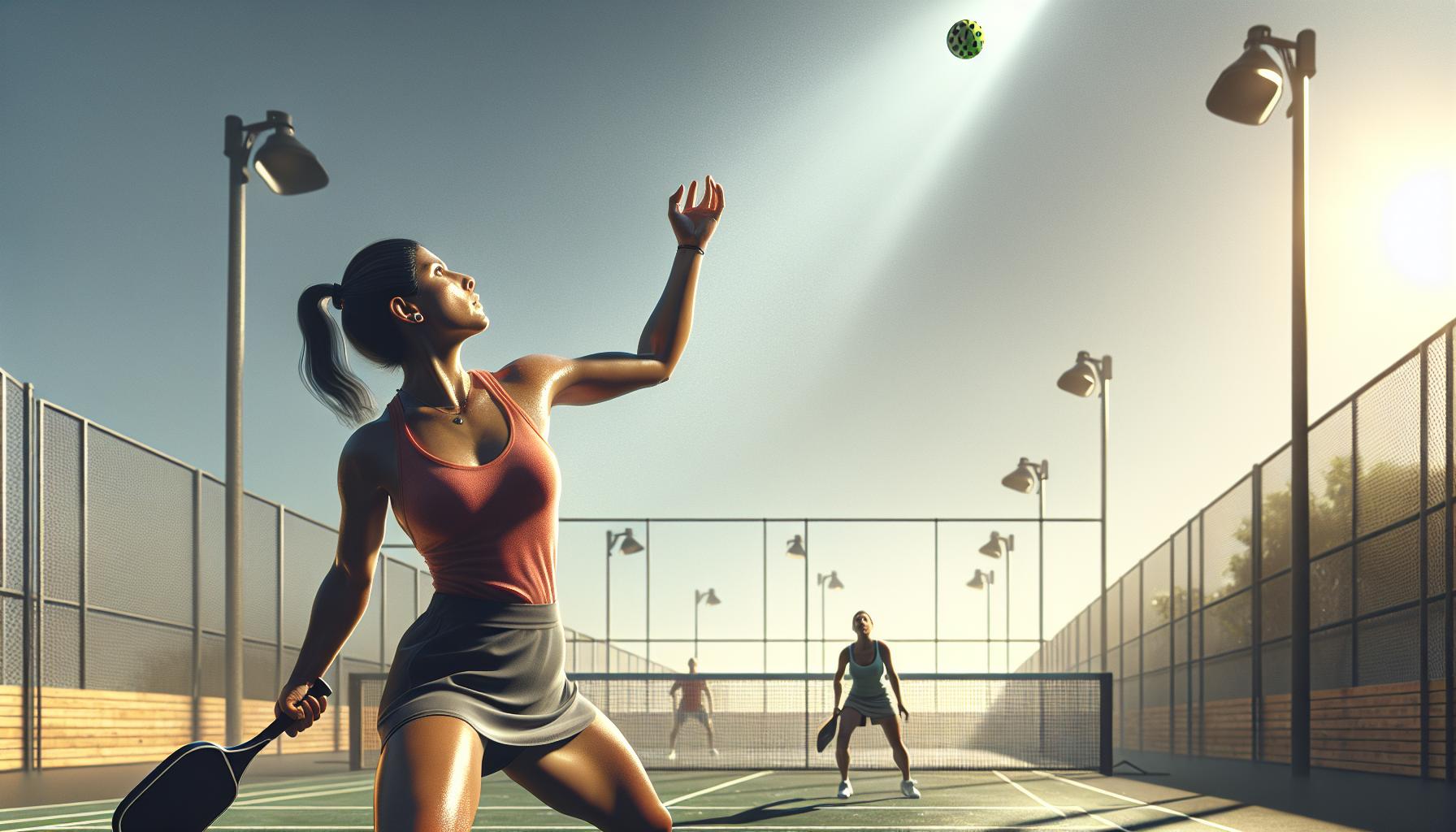
When transitioning from doubles to singles in pickleball, players often find that the strategies and skills required for success shift dramatically. In singles play, the breadth of the court becomes both an advantage and a daunting challenge. Players have more territory to cover, but also more freedom to direct their shots. Here, emphasis is placed on stamina, shot accuracy, and the ability to read the opponent’s movements.
One key to mastering singles play is developing a strong serve. A powerful and well-placed serve can set the tone for the rally, making it crucial for gaining the upper hand early. Players should aim for deep serves that push opponents back, limiting their ability to return with aggressiveness. Variability in serving—mixing up speeds and angles—can further keep the opponent guessing and off-balance.
Movement and positioning are also paramount. Unlike doubles, where players can rely on their partner to cover part of the court, singles players must be adept at moving swiftly and strategically across the entire space. Effective footwork is not just about speed but also about conserving energy and placing oneself optimally for the next shot. Practicing drills that enhance lateral movement and quick changes in direction can significantly improve one’s singles game.
Furthermore, mastering the drop shot can be a game-changer in singles. Since players must cover the entire court alone, a well-executed drop shot can force the opponent to sprint forward, draining their energy and creating opportunities for subsequent scoring shots. However, timing and precision are critical. A poorly executed drop shot might turn into an easy point for the opponent.
To complement the aggressive shots, players should also refine their defensive strategies. Being able to return powerful shots and make difficult saves can turn the tide of a game. Incorporating lob shots into one’s defensive play can provide valuable time to reset and prepare for the next rally, especially when pulled out of position.
Shot selection plays a critical role in singles strategy. While power shots can pressure opponents, consistently aiming for the lines or attempting overly aggressive shots can lead to unforced errors. Balancing aggression with smart play—such as targeting the opponent’s weak hand or exploiting their position—is vital. It’s about making each shot with intention and based on a quick evaluation of the current rally dynamics.
Dominating the Doubles Court: Strategies for Success

Doubles play in pickleball is more than just having two players on each side of the court; it’s about synergy and strategy. Successful doubles teams understand the importance of coordination and communication, using these tools to their advantage to dominate the game.
Communication is Key
In doubles pickleball, effective communication ensures both players are on the same page, preventing overlaps and missed opportunities. Quick, clear calls like “mine,” “yours,” or specific directions help in making split-second decisions that could be the difference between winning and losing a point. This requires not only verbal cues but also non-verbal signals, especially in loud environments or when maintaining stealth is crucial against opponents.
Mastering Court Positioning
The division of the court plays a pivotal role in a team’s defense and offense. Typically, teams choose between two formations: side-by-side or stacked (front-and-back). The side-by-side formation is excellent for wide coverage and defending against smashes, while the stacked setup allows for an aggressive approach, with one player ready to poach at the net. Teams frequently switch between these formations based on the rally’s flow, the opponents’ positioning, and the specific strengths of each player.
Strategizing Shot Selection
In doubles, the decision-making process for shot selection is crucial. With two players, there’s a greater opportunity to set up and execute plays, such as creating openings for a powerful smash or a delicate drop shot that forces the opponents out of position. Synchronized movements and an understanding of each other’s capabilities allow for seamless transitions between aggressive assaults and defensive postures.
Effective Shot Types for Doubles
- Drop Shots: Forcing opponents to move forward, opening the backcourt for powerful returns.
- Lob Shots: Pushing opponents back and creating space near the net.
- Dinks: Accurate soft shots aimed just over the net to limit opponents’ response options.
The Power of Adaptation
Adaptation is vital in doubles play. Teams must continuously assess and adjust their strategies based on opponents’ weaknesses, environmental conditions, and the current score. This dynamic approach can keep opponents off-balance and unable to settle into a rhythm. Adaptation also includes switching up serving strategies, shot selections, and positioning to exploit every possible advantage.
Conclusion
Mastering pickleball requires not just skill but also the right strategy, whether you’re playing singles or doubles. While singles focus on individual prowess and stamina, doubles play demands teamwork, communication, and a deep understanding of your partner’s strengths and weaknesses. Both formats offer unique challenges and rewards, pushing players to adapt and refine their game. Whether you’re aiming to dominate the court solo or as part of a dynamic duo, the journey to excellence is filled with exciting learning opportunities and the chance to develop a versatile skill set. So grab your paddle, and let’s hit the court!

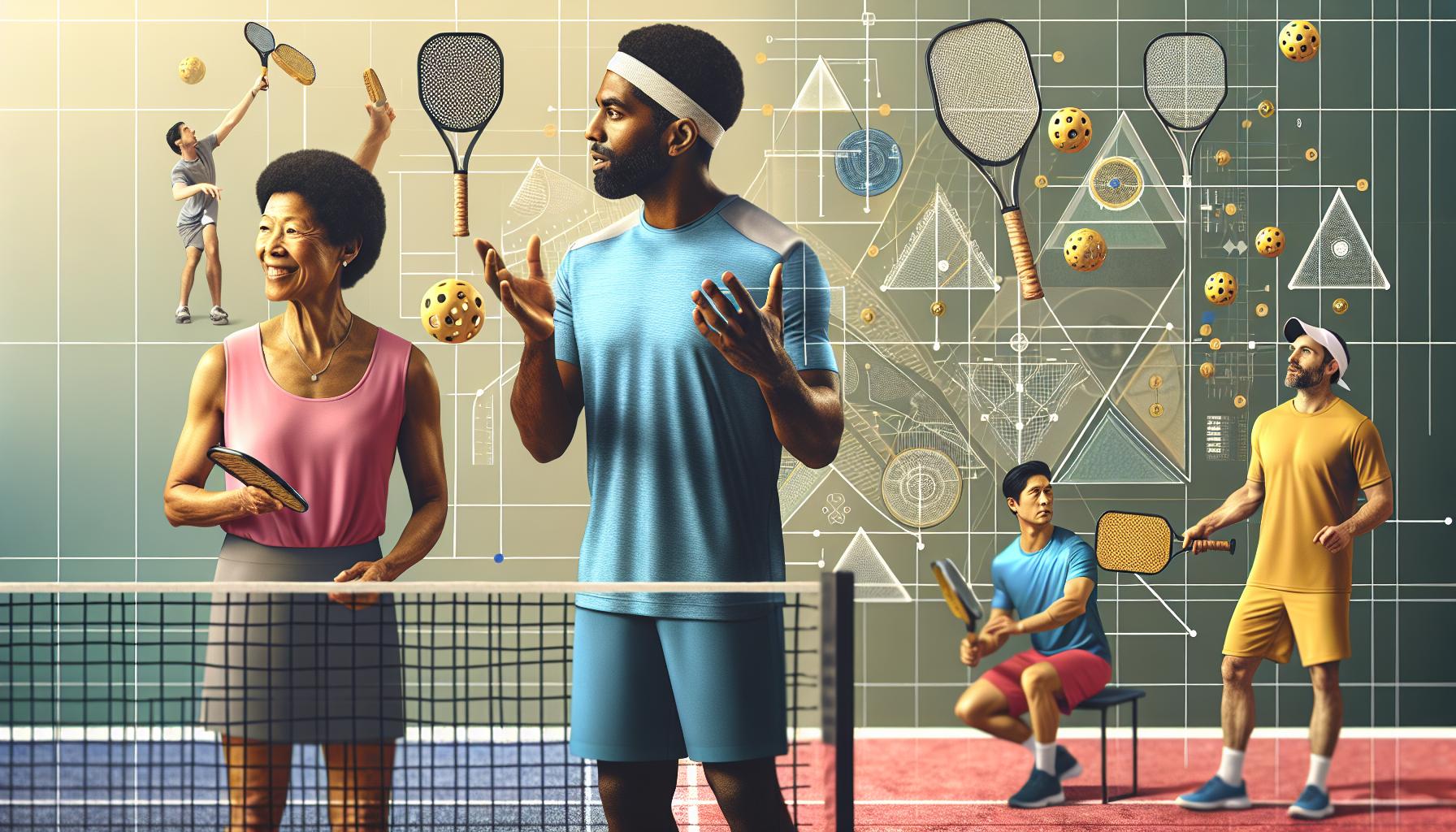









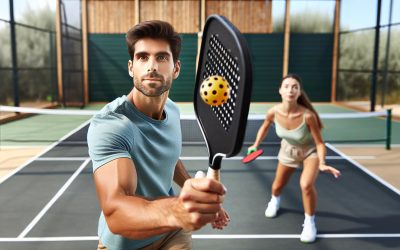
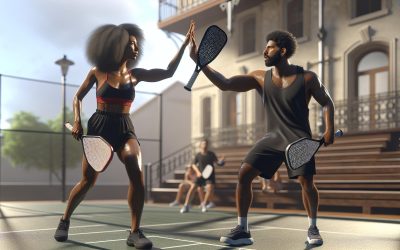

0 Comments